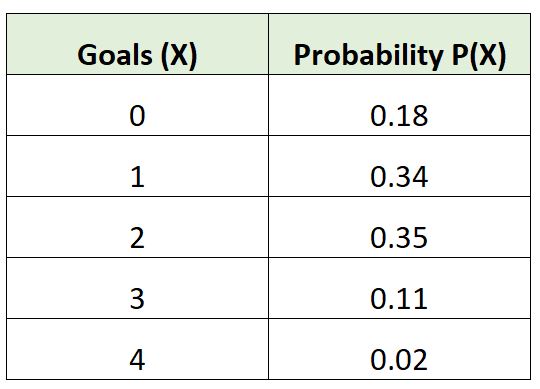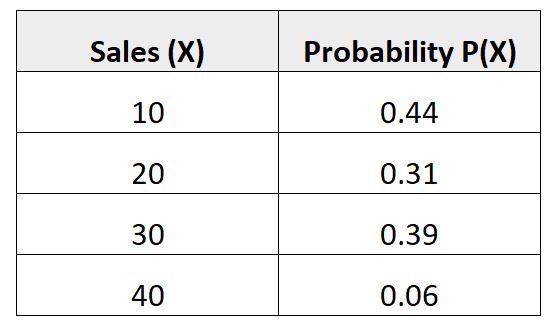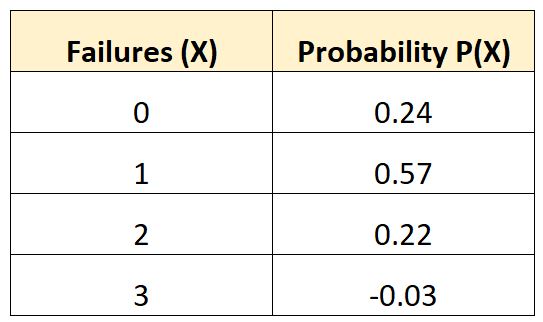A probability distribution tells us the probability that a random variable takes on certain values.
In order for a probability distribution to be valid, it must meet two requirements:
1. Each probability must be between 0 and 1.
2. The sum of the probabilities must add up to 1.
If both of these requirements are met, then the probability distribution is valid.
The following examples show how to check if different probability distributions are valid.
Example 1: Goals Scored in a Soccer Game
The following probability distribution shows the probability of a certain soccer team scoring a certain number of goals in a game:

Let’s check if this probability distribution meets the two requirements to be valid:
1. Each probability must be between 0 and 1.
We can see that each individual probability is between 0 and 1.
2. The sum of the probabilities must add up to 1.
We can see that the sum of the probabilities adds up to 1:
Sum = .18 + .34 + .35 + .11 + .02 = 1
Both requirements are met so this probability distribution is valid.
Example 2: Sales Made in a Month
The following probability distribution shows the probability that a given salesman will make a certain number of sales in the upcoming month:

Let’s check if this probability distribution meets the two requirements to be valid:
1. Each probability must be between 0 and 1.
We can see that each individual probability is between 0 and 1.
2. The sum of the probabilities must add up to 1.
We can see that the sum of the probabilities does not add up to 1:
Sum = .44 + .31 + .39 + .06 = 1.2
Both requirements are not met so this probability distribution is not valid.
Example 3: Number of Battery Failures
The following probability distribution tells us the probability that a given vehicle experiences a certain number of battery failures during a 10-year span:

Let’s check if this probability distribution meets the two requirements to be valid:
1. Each probability must be between 0 and 1.
We can see that each individual probability is not between 0 and 1.
The last probability in the table is a negative value.
2. The sum of the probabilities must add up to 1.
We can see that the sum of the probabilities does add up to 1:
Sum = .24 + .57 + .22 – .03 = 1
Both requirements are not met so this probability distribution is not valid.
Additional Resources
The following tutorials provide additional information about probability distributions:
How to Find the Mean of a Probability Distribution
How to Find the Variance of a Probability Distribution
How to Find the Standard Deviation of a Probability Distribution